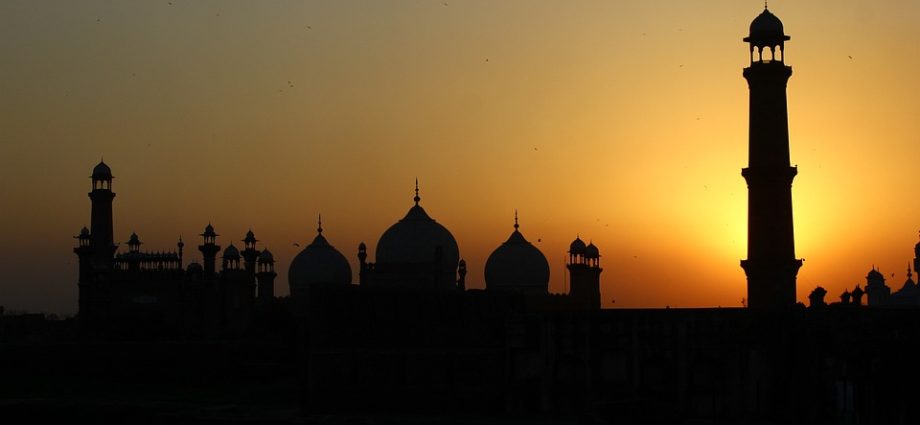Investing in the Future of Pakistan: The Rise of a Promising Destination
Pakistan has long been famous for its diverse cultural heritage and breathtaking landscapes. However, due to various internal and external factors, tourism in Pakistan had been at a standstill for a while. But that is changing now. With improved infrastructure, enhanced security measures, and significant steps taken by the government, Pakistan is becoming a destination for investors. This article will highlight why investing in the future of Pakistan is a smart move, the FAQs about travel to Pakistan, and the top 10 tourist attractions that make it an attractive destination.
Why Invest in the Future of Pakistan?
Pakistan’s economy was one of the fastest-growing economies in the world before Covid-19. In 2021, the nation’s GDP is expected to rise by 4%, and by 2022 it will likely be 4.5%, according to the International Monetary Fund (IMF). The nation has a population of 226 million, which makes it the fifth-largest nation globally regarding its population. The market in this country is particularly suitable for investing in numerous ways. The increased tourism leads to the growth of the hotel & hospitality industry. Additionally, there is renewed demand and an increased need for infrastructure development. The rise of tourism will create more jobs and business opportunities, positively impacting the economy.
Pakistan is abundant with natural resources, which makes it an attractive route investment, particularly for mining industries. Pakistan’s mineral reserves are over $1 trillion and are believed to be the world’s vast reserves of natural reserves that remain unmodified. It is said that Pakistan can supply over 31 minerals, and the mining industry is expected to surge in the future.
The Future of Tourism in Pakistan:
Pakistan has a lot to offer as a tourism destination, from ancient civilizations and scenic mountain ranges, to exotic beaches and wildlife sanctuaries. The tourism industry is being transformed with the move towards more sustainable tourism. The Pakistan government is investing in additional infrastructure like airports, hotels, and improving security measures, which will make it facile for tourists to explore and enjoy the beauty of Pakistan.
The Pakistani government is executing its “Brand Pakistan” campaign, in which they intend to cooperate with tourism partners worldwide to keep the world informed of what Pakistan needs to offer as a tourist location. More government incentives will only increase the amount of international tourists who are likely to visit Pakistan in the coming years, increasing the demand for its tourism industry dramatically.
FAQs About Traveling To Pakistan:
Q: Is it safe to travel to Pakistan?
A: Yes, it is safe to travel to Pakistan. The government has made significant improvements in security measures, and the Pakistan Army has successfully neutralized many insurgent problems.
Q: What is the best time to visit Pakistan?
A: The best time to visit Pakistan is during the spring season (March to May) and autumn season (September to November). During this period, the climate is pleasant, and visitors can enjoy the breathtaking scenery of landscapes.
Q: What kinds of clothes should one wear while traveling to Pakistan?
A: Pakistan is an Islamic country, and it’s culturally essential to dress modestly. Women should avoid wearing short clothes and ensure their heads and arms are covered when visiting religious places.
Top 10 Tourist Attractions in Pakistan:
1. Lahore Fort and Badshahi Mosque: Lahore Fort is a UNESCO World Heritage Site and includes the Badshahi Mosque, which is Pakistan’s most popular tourist attraction.
2. Hunza Valley: Hunza Valley is one of the best places to visit in Pakistan. Located in the northern part, it is well known for its natural beauty and dramatic landscapes.
3. Mohenjo-Daro: Mohenjo-Daro is another UNESCO World Heritage that features the total cities of the 3rd millennium BCE Indus Valley Civilization.
4. K2 Mountain: K2 Mountain, also known as the Savage Mountain, is the highest peak of the Karakoram range.
5. Khyber Pass: The Khyber Pass is a mountain pass connecting Pakistan with Afghanistan. It is rich in history and cultural significance.
6. Shandur Pass: Shandur Pass is situated at an altitude of twelve thousand feet between Chitral and Gilgit, Pakistan’s northern areas.
7. Anarkali Bazaar: Anarkali Bazaar is one of the oldest markets in Lahore, Pakistan. It is an ideal spot for shopaholics.
8. Fairy Meadows: Fairy Meadows, located in the Northern region of Pakistan, is a picturesque place that provides a magnificent view of the Nanga Parbat Mountain.
9. Noor Mahal: Noor Mahal is a palace located in Bahawalpur, Pakistan. It is now turned into a museum with antiques and ancient artifacts.
10. Churna Island: Churna Island is a small yet remarkable island that’s an ideal location for adventurous individuals. It’s best for snorkeling, scuba diving, and observing marine life.
Conclusion:
The investment opportunities in Pakistan are limitless. Tourism has great potential with its natural landscapes, unique culture, and hospitable people. Pakistan is a promising destination, and with the increasing demand of today’s tourism industry in the future, the investment returns will be extremely fruitful. Investing in Pakistan’s future will help its economy grow, create more employment opportunities, and exhibit the rich cultural heritage that it has. With enhanced security measures, spacious and developed infrastructure, and the government’s promotion of tourism, Pakistan is going to be one of the most profitable investment destinations in the coming years.
